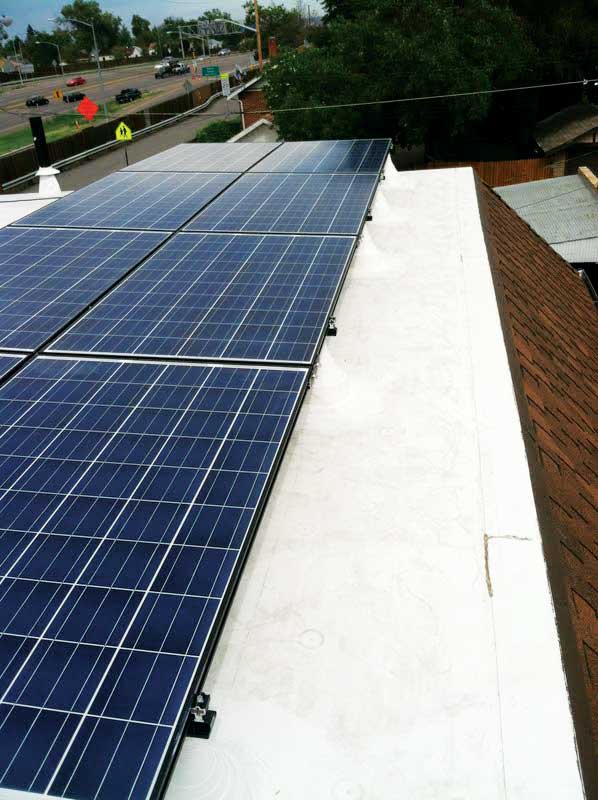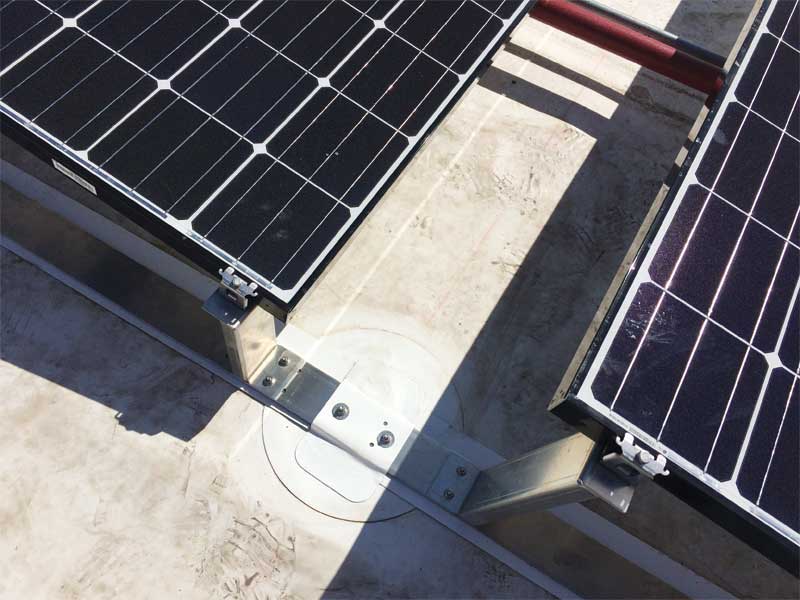Specifying TPO membranes with solar assemblies

PV solar roofs deserve the best
With the installation of rooftop PV, the roofing system becomes more than just a roof—it serves as a permanent platform for the continuous operation, service, and maintenance of the PV system. This is why the roofing system should be designed to minimize the need for major repairs or replacement with the potential to compromise the continuous operation of the rooftop PV.
It is also important the roof system and PV warranties match; this makes it critical roofing manufacturers offer more durable roofs for solar applications. These precautionary measures often include the specification of thicker TPO sheets using enhanced formulations.
ASTM D6878 tests TPO membranes for:
- thickness;
- brittleness point;
- dimensional stability;
- seam and breaking strength; and
- retention after heat-aging.
The study found no clear ‘winner’ except when it came to heat-aging. This is where the roofing industry defines membrane failure—when the sheet cracks. However, failure is not solely about cracking; it is also about weight loss. Thermoplastic membranes lose polymer as they weather. The reason some TPO sheets lose a lot more weight than others lies in their formulations.
Heat-aging is an established science. A TPO membrane experiencing a weight loss of less than two per cent after more than 200 days in a 135-C oven should be considered an extremely durable membrane.
All the products endured three times the ASTM G154, Standard Practice for Operating Fluorescent Ultraviolet (UV) Lamp Apparatus for Exposure of Nonmetallic Materials, requirement for accelerated weathering (QUV). However, QUV plus heat-aging exposed significant weaknesses in two of the membranes tested.
With one exception, the membranes generally did not lose more than approximately 2.5 per cent weight before being withdrawn from testing due to surface cracking. However, in the case of one manufacturer, the weight loss was greater than 10 per cent without any evidence of cracking. This has also been seen for this manufacturer in a study based on heat-aging alone.
While there has been relatively little anecdotal evidence of TPO failing due to cracking, this is not the case for so-called ‘surface erosion,’ whereby the surface erodes down to the reinforcing scrim. It is very possible weight loss seen here is indicative of TPO that might also exhibit such erosion. This means less polymer is available to protect the roof from the extra scuffing, scrapes, fallen tools, and high-heat situations solar PV roofs regularly experience.

The independent testing showed the physical properties of the four TPO membranes were similar, but there were large differences in terms of predicted weathering. The primary takeaway from the research indicates TPO roofing as a product class is a safe choice beneath solar arrays and in other demanding applications. Its quality and durability was apparent in many of the test results. However, the industry is pushing to raise ASTM standards higher.
The study shows there have been notable improvements in product formulations, particularly in temperature loading. For example, QUV plus heat-aging shows a level of product durability unheard of 10 years ago—28 to 45 days to failure was shown without QUV testing in 2005. (This is in comparison to formulations available today that approach 300 days of heat-aging with minimal weight loss.)
The data also suggests a strong relationship between cracking and weight loss. Given this finding, the case can be made for the marketing of three grades of TPO: utility, standard, and premium.
For now, ASTM defines “failure” as visible cracking under a 7x eye piece or weight loss >1.5 per cent.
Utility-grade TPO may be fine for less-demanding applications (i.e. 27 days to failure at 135 C). Standard-grade TPO nearly doubles days-to-failure, while the premium-grade variety almost triples performance. Simulated weather resistance (i.e. kJ/[m2.nm] @ 340 nm) is 10,080, 20,160, and 40,320, respectively.
In one respect, the results of the industry’s first independent test program for TPO is unsurprising. In the roofing market, you still get what you pay for, and solar PV applications require the very best TPO membranes one can procure.
 Michael Russo is a consultant to various manufacturers and industry associations, including GAF and the Single-ply Roofing Industry (SPRI). He was the editor of Roofing/Siding/Insulation Magazine from 1980 to 2005. Russo has been reporting on the low-slope roofing industry for more than 35 years. He can be reached at mikerusso1983@zoominternet.net.
Michael Russo is a consultant to various manufacturers and industry associations, including GAF and the Single-ply Roofing Industry (SPRI). He was the editor of Roofing/Siding/Insulation Magazine from 1980 to 2005. Russo has been reporting on the low-slope roofing industry for more than 35 years. He can be reached at mikerusso1983@zoominternet.net.


